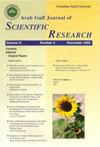Evaluation of fresh vegetable microbiological contamination in fast-food restaurants
Q4 Business, Management and Accounting
引用次数: 0
Abstract
Purpose Fresh vegetables contain advantageous phytochemical components, making them one of the most significant sources of nutrition. The threat of harmful bacteria still exists because these vegetables are not heated in restaurants before being consumed. Therefore, this study aimed to evaluate the microbial quality of fresh vegetables in restaurants of different levels. Design/methodology/approach A total of 499 fresh vegetable samples (from sandwiches and fresh-cut vegetable salads) were collected from 3 different types of food service establishment: 201 from international restaurants (IRs), 210 from national restaurants (NRs), and 88 from cafeterias (CAs). The samples were prepared and inoculated on specific growth media. The aerobic mesophilic bacteria (AMB) Campylobacter spp., Staphylococcus aureus (S. aureus) , Enterobacteriaceae , Escherichia coli (E. coli) and yeast and molds were counted, and Listeria monocytogenes , Salmonella spp. and Escherichia coli O157 were detected using specialized medium. Findings High counts of S. aureus , above 3 log cfu/g, suggested that 71.5% of samples collected from NRs and 77.3% from CA were not accepted, whereas 81.6% of samples collected from IRs were accepted. The low population of E. coli , less than 2 log cfu/g, suggested that 99.0, 97 and 92.0 % of samples collected from IRs, NRs and CA, respectively, were accepted. Listeria monocytogenes and Escherichia coli O157 were absent from every sample. One sample was positive for Salmonella spp. in each of the NR and CA sample groups. Originality/value RIs adhere to health and hygiene standards better than NRs and CAs, according to the findings of vegetable contamination tests.快餐店新鲜蔬菜微生物污染评价
新鲜蔬菜含有有益的植物化学成分,是最重要的营养来源之一。有害细菌的威胁仍然存在,因为这些蔬菜在食用前没有在餐馆加热。因此,本研究旨在评价不同层次餐厅新鲜蔬菜的微生物品质。设计/方法/方法共从3种不同类型的食品服务机构收集了499份新鲜蔬菜样本(来自三明治和新鲜切蔬菜沙拉):201份来自国际餐厅(IRs), 210份来自国内餐厅(nr), 88份来自自助餐厅(CAs)。制备样品并在特定培养基上接种。对需氧中温细菌(AMB)弯曲杆菌(Campylobacter spp)、金黄色葡萄球菌(S. aureus)、肠杆菌科(enterobacteraceae)、大肠杆菌(Escherichia coli)、酵母菌和霉菌进行计数,用专用培养基检测单核增生李斯特菌(Listeria monocytogenes)、沙门氏菌(Salmonella sps)和大肠杆菌O157。结果金黄色葡萄球菌检出高于3 log cfu/g,表明NRs和CA中71.5%和77.3%的样品不被接受,而IRs中81.6%的样品被接受。大肠杆菌的低种群(小于2 log cfu/g)表明,在IRs、NRs和CA采集的样品中,99.0%、97%和92.0%的样品被接受。所有样品均未检出单核增生李斯特菌和大肠杆菌O157。在NR和CA样品组中,各有一个样品呈沙门氏菌阳性。根据蔬菜污染测试的结果,原创性/价值改良品种比改良品种和改良品种更符合健康和卫生标准。
本文章由计算机程序翻译,如有差异,请以英文原文为准。
求助全文
约1分钟内获得全文
求助全文
来源期刊

Arab Gulf Journal of Scientific Research
综合性期刊-综合性期刊
CiteScore
1.00
自引率
0.00%
发文量
0
审稿时长
>12 weeks
期刊介绍:
Information not localized
 求助内容:
求助内容: 应助结果提醒方式:
应助结果提醒方式:


